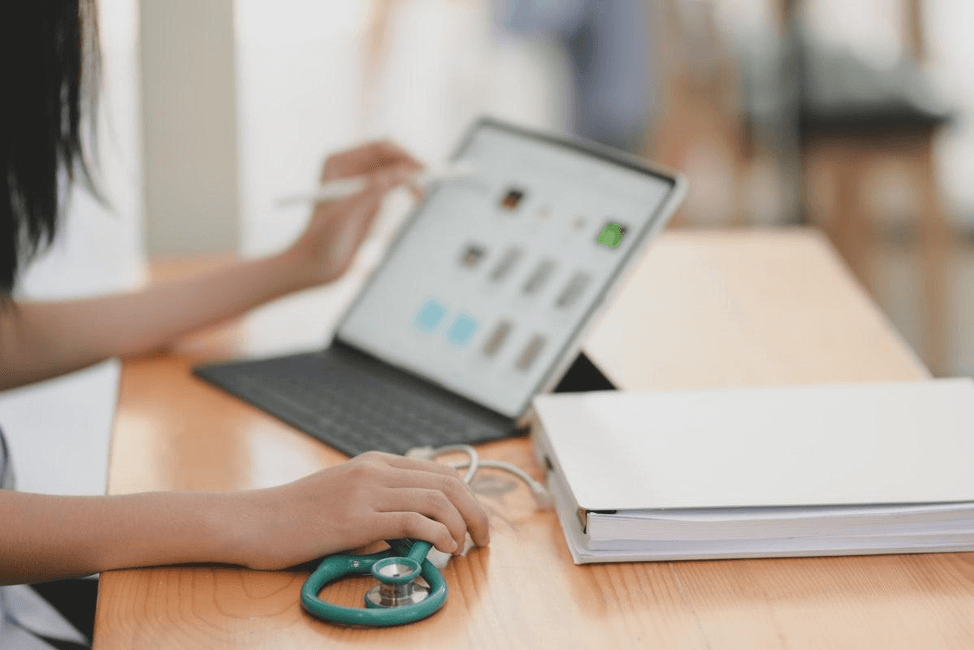How IoT Solutions Will Revolutionize the Healthcare Industry
When you're reading or listening about technology these days, it seems like the Internet of Things (IoT) is everywhere.
It's connecting people through their phones and wearable devices, cars, airplanes, the machinery around them, devices at home, and government security cameras.
How is this kind of technology going to change society? Will your life be changed much in the next 20 years, or is the IoT just going to blend into the background with little visible effect?
Here are just a few ways IoT will change the healthcare field.
Cost Reduction in Diagnosis
One of the primary drivers of current healthcare costs is diagnosis.
Doctors and nurses don't come cheap, and each diagnosis takes a vast amount of professional time to gather the necessary information.
IoT devices can collect the data more quickly, more accurately, and move the diagnosis process out of the expensive clinical setting and into the home. Quicker information availability will soon be available through wearable devices and remote sensing by home IoT appliances.
Less of the precious medical professional's time is needed to gather vital statistics and other data like prosthetics, blood and breath sampling, and pacemaker models.
Headphones, phones, watches, and similar devices can sense this data automatically, recording and transmitting the information in real-time.
With direct communication over the internet, these devices and those in the clinical setting can convey information back and forth more precisely, sorting and collating the data into categories using AI to speed diagnosis.
Faster diagnosis is yet another step towards cost savings. It can also be a valuable aid in minimizing medical mistakes and providing efficient treatment.
Remote Monitoring of Patients
One benefit of this new technology is the ability to simultaneously monitor and report statistics.
It will be easier to check up on heart patients and transplant recipients with IoT devices that can automatically dispense electric stimulation or doses of medication while communicating with the doctor and hospital.
Re-admissions rates will go down, providing a better quality of life for these patients with a much better quality of care and reduced stress and work for doctors and nurses.
This is yet another area where costs will be reduced in the system, with fewer hospitalizations for severe conditions because they can be treated and monitored automatically.
For patients that do experience medical events, the devices they're wearing or their phones could automatically signal autonomous vehicles equipped with life support equipment to transport them quickly to the nearest treatment center or hospital.
This same technology could help to maintain appointment schedules for patients, making sure both they and the doctor are on time.
In the event of accidents, heart attacks, or strokes, medical professionals could be dispatched directly to the victim with no need for a phone call or intervention by a third party witness.
Automatic Charting and Analysis
Some of the biggest advancements in electronics technology has come in the form of smaller processors and increased amounts of data storage.
Semiconductors and memory chips are getting smaller and smaller while holding and processing more and more information.
It's possible to have devices as powerful as desktop computers dedicated to monitoring health-related data, compiling and charting the data, and transmitting the charts and sorted readings to medical personnel over the internet and into cloud storage.
This will allow multiple professionals at once to access and discuss the data, providing real-time collaboration in the maintenance and diagnosis of medical conditions.
For conditions like lupus that are difficult to diagnose without correlating extensive amounts of data and test results, this process will prove invaluable.
Patients suffering from rare disorders or conditions that don't have direct tests and instead rely on elimination will receive diagnoses much sooner.
With real-time management of symptoms and treatments, these patients will have far better medical treatment and live much fuller, more productive lives.
Health maintenance among both old and young people will be vastly improved, with immediate availability of behavioral health and direct monitoring of exercise, diet, and dental maintenance.
Reminders can be sent when people start to become overweight or otherwise neglect or abuse their health.
The system can handle smoking cessation programs, counseling, and curiosity requests for information automatically instead of requiring doctors and nurses to nag people or answer questions not related to an immediate medical need.
Opportunities for Medical Research
The IoT holds incredible promise as a research tool because it can collect vast amounts of data on particular conditions.
Not only that, but it’s also possible to gather and collate it among thousands of individuals at once in real-time. Then artificial intelligence can sort out similarities and anomalies in the vast ocean of data collected.
The progress that once took decades of study could take place in a matter of months using this system to perform the legwork.
Imagine the potential inherent in gathering data in real-time from thousands of lung cancer patients daily. No medical study has ever accomplished anything like this.
Instead of a few dozen or a few hundred individuals, this system can deliver information on millions of patients with some conditions.
One of the greatest benefits of IoT is the possibility of predictive diagnosis and maintenance, which could tremendously benefit the healthcare industry by lowering the pressure on the medical staff.
IoT can also speed up the diagnosis of medical conditions in their early changes, which could drastically affect the treatment outcome.
The ability of intelligent computers to sort the data into categories and search for relationships not apparent to humans could speed cures for diseases by decades.
Vaccine and treatment trials will be handled with much more efficacy and speed. Efficient development of pharmaceuticals and therapeutic methods are also part of this new reality.
IoT Is Not Perfect
While there will be a myriad of challenges to implement IoT solutions to medical problems, there will be astounding progress in every aspect of the medical universe.
Challenges include legal and moral implications, the ethics of access to information and orders to treatment and the cost and technical development issues of any new technology solutions.
However, with patience, foresight, and consideration of the best and most ethical applications of IoT technologies, there's almost no limit to the ways you can imagine this technology revolutionizing the healthcare industry.



